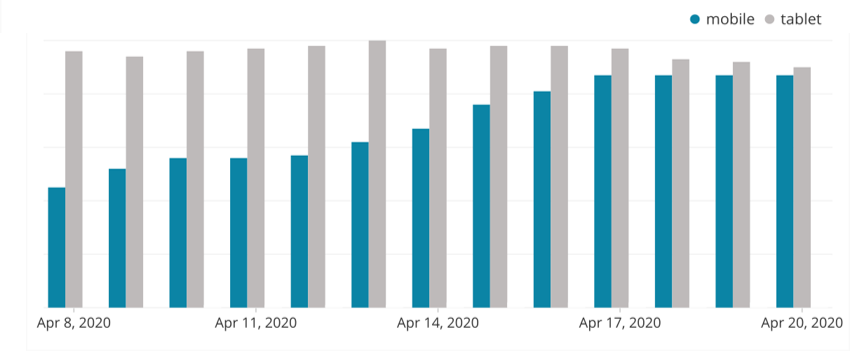In the COVID-19 partner Q&A series, we will share knowledge and expertise from HRS partners across the country on how they are leveraging telehealth in response to COVID-19. Below, Banner Health's Care Coordination Post Acute Senior Manager, Mandy Johnson, provides unique insight into the value of telehealth during the pandemic, and offers her advice for utilizing virtual visits.
1. How do you anticipate the telehealth offerings will relieve strain or free-up healthcare resources?
We have expanded our telehealth in preparation for surge planning. The video visits have been a tremendous help to ensure that we are able to continue to see all patients and ensure the care needed is provided. Visits that are classified as level 3 are being switched to video visits when possible. Level 3 visits are typically observation assessment, education, symptom management/checks. The video visits ensure there is no disruption in care while allowing patients that needs hands on care to be seen. The video visits have also provided an opportunity for visits when facilities are not allowing staff into the facility. We have been able to continue to see and assess the patients while respecting the facility or groups homes wishes. The use of our telehealth kits have allowed for patients to receive monitoring and allow staff to be able to see other patients.
2. What patients are you monitoring via telehealth during the COVID-19 outbreak?
We have continued with our current tele criteria for our tele kits, CHF, COPD, Afib, HTN, P/A MI Sepsis. We did not make any changes to this area. We did however add monitoring of COVID positive. This allows for symptom management, and an option for video visits that adds an extra layer of protection for the patients and staff.
In addition to our kits we have expanded to PatientConnect Mobile and offer this to any patient that has a smart phone. We have used the mobile option for all patients regardless of diagnosis. We have used this option if the patient is unwilling or fearful to have staff in their home or is COVID suspected or positive. The mobile application has been a tremendous help to alleviate fears of both staff and patients.
Banner Health PatientConnect Mobile Utilization Increase
3. What have been your biggest challenges in managing patients with fewer in-person visits?
The biggest challenge is the first virtual visit and getting the patient comfortable with the process. No other challenges at this time have been encountered.
4. What aspects of the telehealth platform have been most valuable during this outbreak?
The virtual visits have been the most valuable during this time. Being able to quickly deploy the mobile application for patients that have smart phones. There is no delay in shipping and the set-up process is very simple.
5. What are your best recommendations for virtual visits?
I always recommend doing a test call with the patient to ensure they know what the process is going to look like, and all the kinks are worked out. The more comfortable the patient is with the process, the better the call will be. You also want to make sure there are no internet barriers. The biggest barrier is patients selecting "no" to allow notifications. We have learned work arounds for when the wrong button is selected.
6. What advice would you give other organizations looking to operationalize telehealth as a response to COVID-19?
The biggest advice is to be willing to jump in. We are all facing a time of uncertainty and there is never going to be a best fit during this time. By just jumping in you will have some staff that will really embrace it and then you can see who is struggling and help by pairing the ones that are embracing with the ones that may be more resistant. Use success stories that will help the ones that are unsure see that it is working. Also know this is not an option for everyone, not all patients will be willing despite how easy it is and some areas may have internet difficulties. Within the bell curve, there will always be patient outliers who are not suited for telehealth, however, the majority of patients are suited and willing.